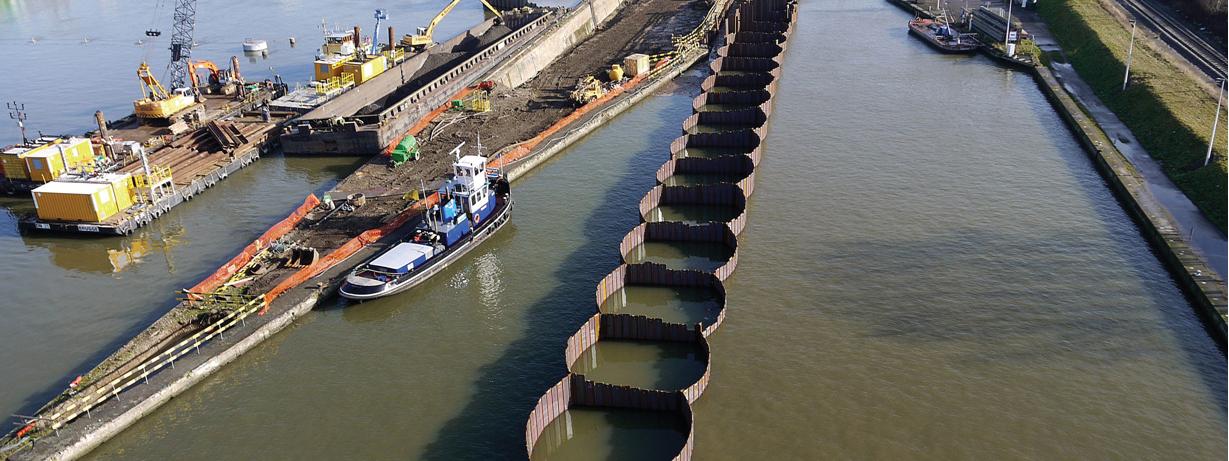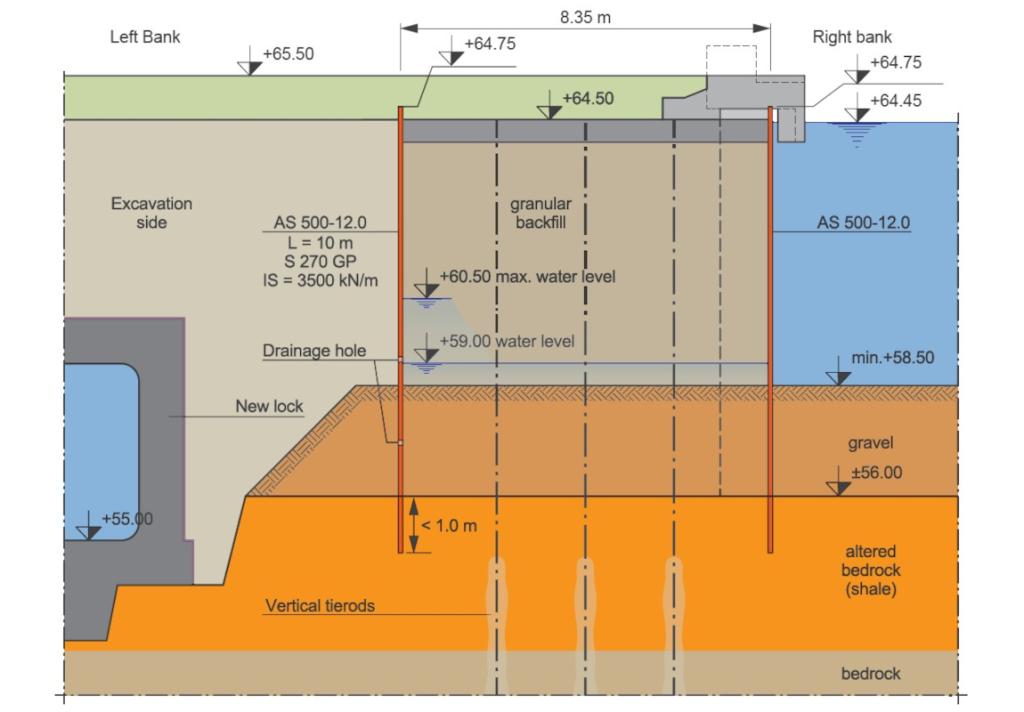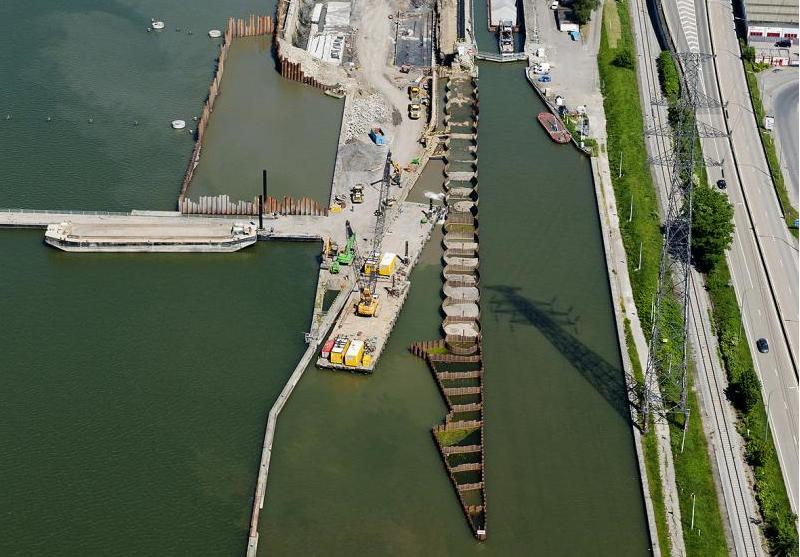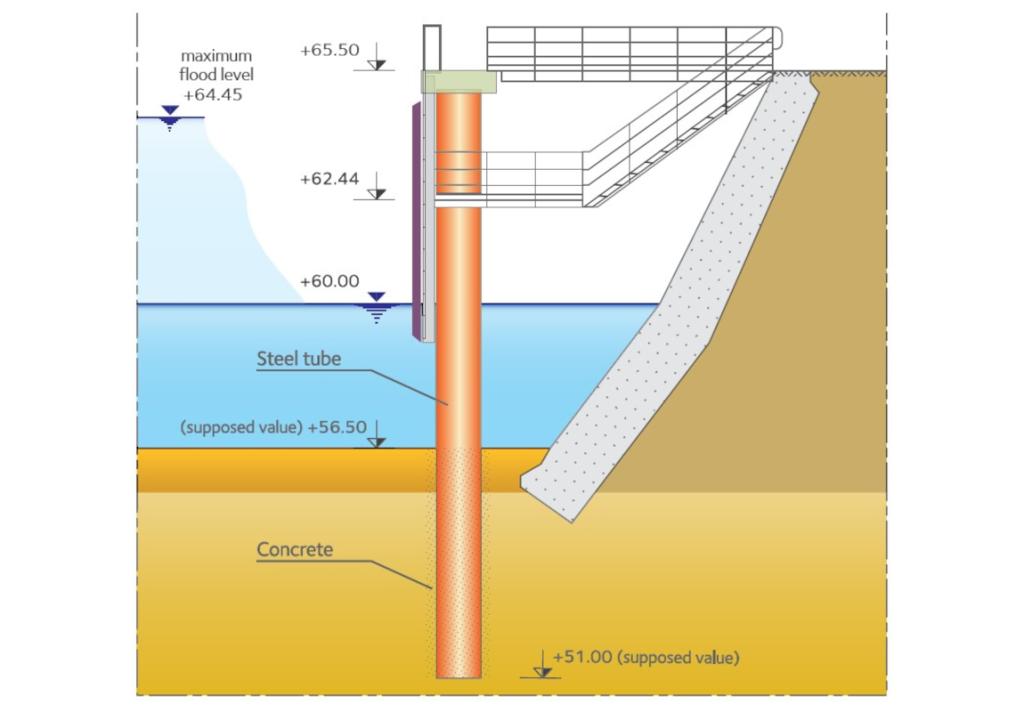New Lock of Ivoz-Ramet Flémalle, BE | 2011
Expanding the Ivoz-Ramet lock for Increased capacity on the Meuse waterway
The Ivoz-Ramet river weir and lock complex on the River Meuse near Liège lies on the Rhine / Meuse-Main-Danube trans-European priority corridor, connecting the North Sea with the Black Sea. The largest tonnage in the entire Walloon Region passes through this hydraulic lock.
In the last 20 years, the traffic at this location has grown from 6 million to 12 million tonnes per year. As a result, the existing 136 m x 16 m lock (class Va, CEMT classification) is now near to saturation. To allow the traffic of class VIb vessels up to 9000 tons, and to reduce waiting times, the Service Public de Wallonie (SPW) has, therefore, decided to build a new and larger lock, sized 225 m x 25 m, with a maximum water head difference of 4.45 m.
The space available for this new lock was constrained by a road and railway on the right river bank, a hydro power station and a weir, serving as road bridge, on the left bank, and important urban and economical developments in the surroundings. The only possible location for the new structure was between the existing 136 m x 16 m lock and the weir, dismantling the old 55 m × 7.5 m lock.



 English
English
 French
French




